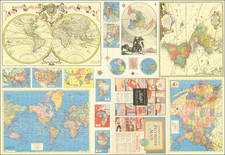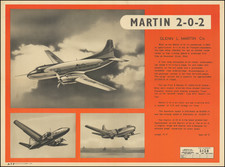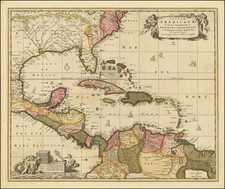Bonitæ, Albacoræ, Auratæque, & sues marini, piscesque volatiles, aliique by Theodor de Bry, printed in Frankfurt in 1591, offers a vivid representation of Girolamo Benzoni's maritime encounter during his voyage to the New World. This work showcases Benzoni aboard his ship as he marvels at the sight of flying fish while approaching the Caribbean, encapsulating a transformative period in the age of exploration.
The late 16th century was marked by an intense drive for exploration, with European navigators making daring voyages to uncharted territories. Amidst this backdrop, Girolamo Benzoni embarked on a journey to the New World in 1541, traversing the Caribbean, Central and South America. His travels culminated in the publication of Historia del Mondo Nuovo in 1565, a chronicle that painted a detailed picture of the cultures, environments, and phenomena he encountered. One of the most captivating segments of this account is Benzoni's description of flying fish, a sight that left an indelible mark on his crew as they sailed west from the Canaries for two weeks.
Theodor de Bry's rendering of this notable passage not only offers a dynamic portrayal of Benzoni, engrossed in his observation, but also captures the essence of maritime exploration during this era. Within the composition, the viewer is treated to the sight of Benzoni, singular in his focus on the deck of his flagship, surrounded by the enigmatic flying fish. The background, punctuated with additional sailing vessels, windheads, and elusive sea monsters, hints at the vast mysteries of the oceanic expanse. Most intriguing is the depiction of a distant landform on the horizon, likely symbolizing the anticipated New World, drawing Benzoni and his crew towards discovery.
This print, by virtue of its subject matter and execution, serves as a window into the sense of wonder and anticipation that permeated the age of exploration.
Theodor de Bry (1528-1598) was a prominent Flemish engraver and publisher best known for his engravings of the New World. Born in Liege, de Bry hailed from the portion of Flanders then controlled by Spain. The de Brys were a family of jewelers and engravers, and young Theodor was trained in those artisanal trades.
As a Lutheran, however, his life and livelihood were threatened when the Spanish Inquisition cracked down on non-Catholics. De Bry was banished and his goods seized in 1570. He fled to Strasbourg, where he studied under the Huguenot engraver Etienne Delaune. He also traveled to Antwerp, London, and Frankfurt, where he settled with his family.
In 1590, de Bry began to publish his Les Grands Voyages, which would eventually stretch to thirty volumes released by de Bry and his two sons. The volumes contained not only important engraved images of the New World, the first many had seen of the geographic novelties, but also several important maps. He also published a collection focused on India Orientalis. Les Grands Voyages was published in German, Latin, French, and English, extending de Bry’s fame and his view of the New World.












![[ Columbus's 4 Voyages to the New World ] Carte Des Indes Occidentales pour servir aux Voyagen de Christophe Colomb.](https://storage.googleapis.com/raremaps/img/small/103375.jpg)
![[ Compass Rose ]](https://storage.googleapis.com/raremaps/img/small/85884.jpg)
![[Three Vintage Frank Kettlewell Cartoons]](https://storage.googleapis.com/raremaps/img/small/68562.jpg)